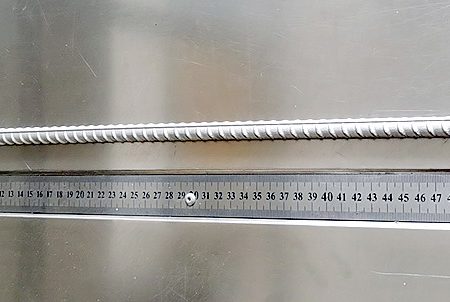ESTRUENDO 536 El riel de la grúa A100 está hecho de acero aleado de alta resistencia y tiene un, Superficie plana diseñada para facilitar el movimiento seguro y eficiente de cargas pesadas en entornos industriales. The rail is typically secured to a support structure using a variety of fastening systems, como clips o pernos, and is often used in conjunction with overhead cranes, grúas pórtico, and other material handling equipment.
The specification for DIN 536 A100 crane rail includes the following:
– Estándar: ESTRUENDO 536
– Tipo: A100
– Material: high-strength alloy steel
– Largura: typically 12 Metros, but can be customized
– Peso: aproximadamente 74.3 kg/metro
– Área seccional: aproximadamente 171.8 cm²
– Momento de inercia: aproximadamente 349.6 cm^4/m
– Resistance to bending: aproximadamente 360 Kn
These specifications may vary slightly depending on the manufacturer and specific application requirements.
Transporting DIN 536 A120 crane rails by sea can be accomplished by following these general steps:
1. Determine the quantity of rails to be transported and the available space on the vessel.
2. Secure all rails with chains or steel cables to prevent movement during transport.
3. Use a crane or forklift to load each rail onto the vessel. The rails should be stacked horizontally and secured to prevent them from tipping over.
4. Determine the proper routing and schedule the shipment with a shipping company.
5. Ensure that all necessary customs and shipping documents are prepared and submitted on time.
6. During shipment, monitor the vessel’s status and ensure that the rails remain secured and undamaged.
7. Upon arrival at the destination port, use a crane or forklift to unload the rails and transport them to their final destination.
It’s important to note that specific shipping procedures and requirements may vary depending on the destination country, the shipping company, and the specific regulations that apply to the transportation of goods by sea. It’s recommended to consult with experienced shippers or logistics experts to ensure that the rails are transported safely and efficiently.
Recomiende nuestros rieles de fondo plano estándar internacional:





